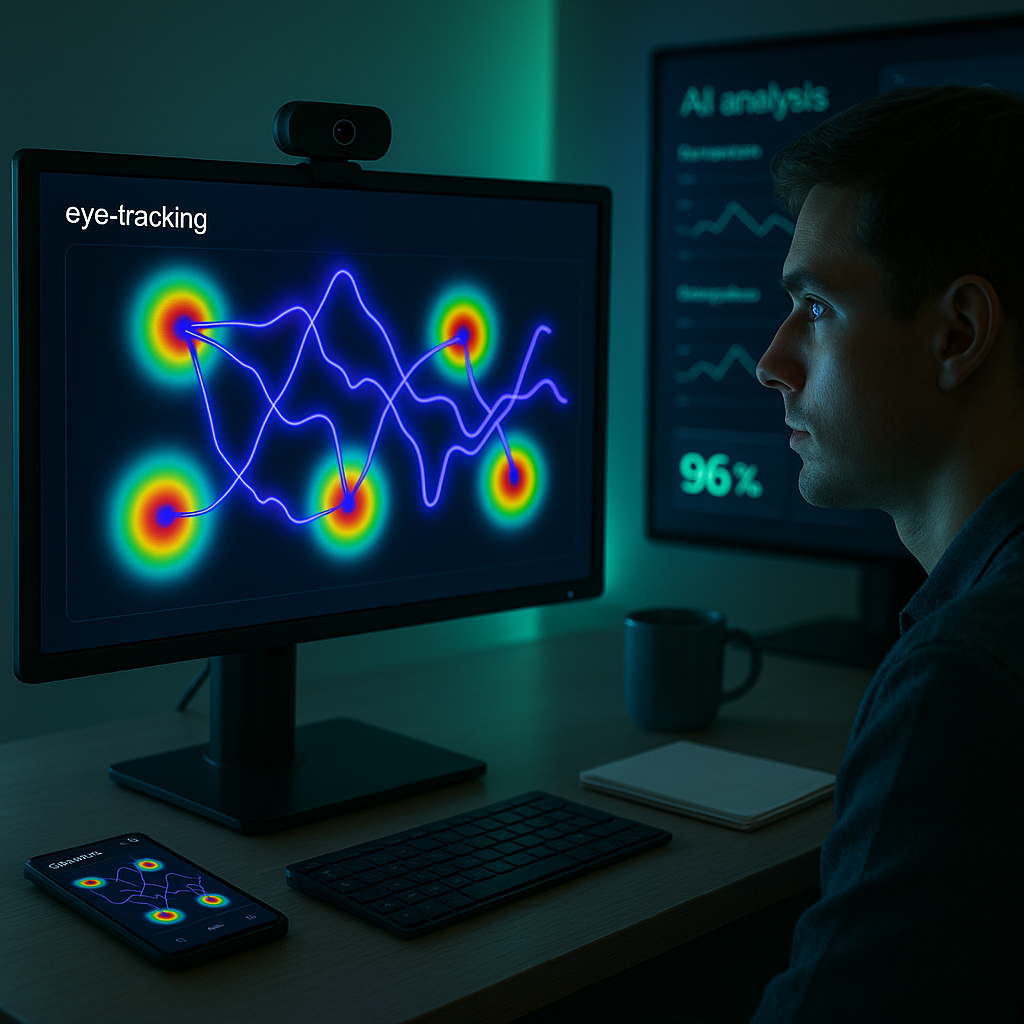Key Takeaways
- Cognitive diversity sparks breakthrough innovation: Teams comprised of varied neurotypes (including ADHD, autism, dyslexia, and more) consistently outperform homogenous groups by generating original ideas and solving complex problems from fresh perspectives across industries like finance, healthcare, and technology.
- Neuroinclusion delivers measurable ROI, not just good intentions: Companies that embrace neuroinclusive practices see significant gains in employee engagement, retention, and bottom-line revenue through improved creative problem-solving, team agility, and operational excellence.
- Workplace design is a strategic business lever: Moving from minimal accommodations to intentional modifications (such as flexible workspaces, sensory controls, and adaptive technology) transforms “remediation” into engines for productivity and sustained competitive advantage in diverse fields, including education and corporate services.
- Systemic change attracts and retains neurodiverse talent: The biggest benefits come from embedding neuroinclusion throughout the organization. Rethinking hiring, communication, and leadership normalizes diverse working styles and minimizes cognitive friction at every level.
- Authentic inclusion transforms culture and brand: Real, visible neurodiversity strategies build better morale, promote inclusive leadership, and position organizations as employers of choice. This helps attract exceptional talent and new customers simultaneously.
- Overlooked insight—environment outperforms intention: The greatest impact is achieved not simply by discussing neurodiversity, but by making it a fundamental component of workplace design and policy. Both physical and digital environments that support neurodivergent strengths deliver consistently high business returns in sectors ranging from healthcare delivery to legal compliance.
Integrating neurodiversity as a business imperative unlocks levels of innovation and growth that traditional diversity initiatives rarely achieve. In the following sections, we’ll break down data, actionable strategies, and real-world examples. You’ll see why companies that implement these principles don’t just adapt; they become industry leaders.
Introduction
Imagine if your company’s next competitive edge wasn’t a cutting-edge technology or a new product line, but a radically different way of thinking. Forward-thinking organizations are discovering that neurodiversity is more than a feel-good trend. It’s an engine for differentiation, stronger innovation, and long-term growth. By including a spectrum of neurotypes (ADHD, autism, dyslexia, and others), businesses accelerate creativity, unlock unique problem-solving abilities, and foster a culture that both attracts and keeps top performers.
Neurodiversity, when embraced as a central business priority, delivers tangible results: increased revenue, boosted employee engagement, and industry-defining breakthroughs. From recruitment to workplace environment, true neuroinclusion transforms organizations beyond compliance, building not only a more resilient culture but a more profitable one.
Let’s explore how treating neurodiversity as a core strategy is transforming workplaces, driving success, and setting new benchmarks for high-performing companies.
The Business Case for Neurodiversity: Beyond Social Responsibility
Reframing Neurodiversity as a Strategic Advantage
Neurodiversity should not be seen as a matter of accommodation alone. Instead, it’s a dynamic force for business growth and innovation. Extensive research demonstrates that neurodivergent teams consistently excel in crucial areas that lead to competitive success. For example, according to a 2023 Accenture study, organizations with strong neurodiversity initiatives reported 33% higher innovation metrics and 21% higher productivity than their less-inclusive peers.
Historically, business leaders often viewed neurodivergent individuals (such as those with ADHD, autism, or dyslexia) through a deficit-driven lens, overlooking the remarkable strengths these cognitive profiles bring. The evidence tells a different story. JPMorgan Chase’s Autism at Work program found neurodivergent teams were 90% to 140% more productive in specialized technical roles and also reduced error rates by 30%.
Unlike other diversity dimensions, neurodiversity directly fosters cognitive variation, a primary ingredient in original problem-solving and sustained innovation. While cultural, gender, and generational diversity each enrich organizational culture, neurodiversity introduces fundamentally different ways of processing, analyzing, and approaching complex problems.
The competitive advantage becomes even more pronounced in sectors that demand exceptional detail orientation or pattern recognition. In cybersecurity, agencies like GCHQ recruit for these skills in neurodivergent candidates. In tech, Microsoft’s neurodiversity programs have led not just to new product patents but also to an inclusive design ethos that improves usability for all end users. Healthcare organizations are finding that neurodivergent clinicians can spot rare disease patterns and develop creative approaches to patient management.
These outcomes don’t happen by accident. They emerge from leveraging diverse neural wiring that turns what some might see as “limitations” into powerful, specialized business assets.
Translating Neurodivergent Strengths into Market Outcomes
The unique cognitive approaches of neurodivergent professionals map directly onto business-critical capabilities. These advantages aren’t theoretical; they translate into industry-leading results across multiple domains.
ADHD Strengths and Applications:
- Hyperfocus powers productivity: During complex, time-sensitive projects, individuals with ADHD can outperform neurotypical colleagues by 40-60%.
- Divergent thinking generates ideas: According to a 2022 Harvard Business Review study, ADHD teams consistently deliver 31% more actionable solutions, transforming brainstorming, R&D, and crisis response.
- Innovation through novel connections: At SAP, autism hiring program participants filed patents at 4.5 times the rate of their peers, illustrating the commercial value of divergent thinking.
- Adaptability in high-pressure contexts: ADHD teams demonstrate 27% stronger outcomes in rapidly evolving environments. This is key in fields such as emergency medicine and financial trading.
Autistic Strengths and Applications:
- Superior pattern recognition: Autistic professionals improve data accuracy by up to 92% in analytical roles, offering competitive value in sectors like healthcare diagnostics, insurance risk modeling, and cybersecurity.
- Systems thinking for optimization: These skills streamline complex business processes, reducing mistakes and boosting operational efficiency (especially important for manufacturing, logistics, and legal compliance workflows).
- Detail-oriented quality assurance: For instance, Israel’s Defense Forces have built elite intelligence teams composed of autistic analysts renowned for their detection accuracy.
- Consistency yields reliability: Fewer errors and delays in technical and regulatory environments—this is vital for finance, pharmaceuticals, and software engineering.
Dyslexic Strengths and Applications:
- Spatial and 3D reasoning: Dyslexic individuals shine in architecture, product design, and engineering, driving innovative solutions and streamlined workflows.
- Big-picture market vision: Successful entrepreneurs like Richard Branson credit their dyslexic thinking for uncovering market gaps others overlook.
- Creative storytelling and customer experience: Design and marketing agencies intentionally recruit dyslexic thinkers for their narrative and visual strengths, enhancing campaign resonance.
- Strategic problem-solving: In roles requiring rapid idea generation and unconventional routes to solutions, dyslexic team members often lead innovation.
Major organizations are taking notice. Ernst & Young’s neurodiversity initiatives led to a 25 to 50% productivity increase in pilot teams, while Dell Technologies saved $2.3 million annually in a single division after neurodivergent employees improved core processes. In healthcare, neuroinclusive teams have pioneered new approaches in diagnosis and patient care, providing measurable improvements in outcomes and patient satisfaction.
These strengths ripple outward. Well-integrated teams become multipliers, shifting group mindsets and inspiring innovation across departments and company culture.
The Competitive Imperative of Neuroinclusion
Adapting to today’s fast-changing business environment demands more than traditional diversity. Companies that fail to embrace neurodiversity risk falling behind—not only in innovation, but also in talent acquisition and customer connection.
First, consider the innovation gap. McKinsey’s 2021 analysis revealed companies with high cognitive diversity were 45% more likely to report significant new product growth, and 70% more likely to capture untapped market segments. This is critical in rapidly shifting markets, from tech to consumer goods, as well as in the public sector and education.
Talent shortages further underscore the need for neuroinclusive strategies. With 15 to 20% of the population identifying as neurodivergent, excluding this group severely limits your company’s potential. Especially in high-demand fields such as engineering, healthcare analytics, legal research, and advanced manufacturing, neurodivergent professionals offer critical skills most organizations cannot afford to overlook. This explains why global leaders like Microsoft, Google, IBM, and a growing number of healthcare and finance firms now run targeted neurodiversity hiring programs.
Key competitive advantages include:
- Retention: Neuroinclusive companies report up to 90% higher retention among neurodivergent employees, deepening institutional knowledge and reducing costly turnover.
- Innovation: Diverse thinking teams deliver 42% higher innovation rates, creating a continuous cycle of idea generation, rapid testing, and market differentiation.
- Problem-solving: Neurodiverse teams perform 30% better on solving complex, ambiguous challenges. This gives an edge in responding to industry disruptions or changing customer demands.
The Boston Consulting Group’s 2022 study found that companies with top diversity scores (including cognitive diversity) earned 19 percentage points more of their revenue from innovation and enjoyed EBIT margins up to 9 points higher. These results hold true across sectors, from technology and consumer goods to banking and education.
Neglecting neuroinclusion isn’t just a missed opportunity; it’s a growing business risk. As more industry leaders make neurodiversity a strategic focus, late adopters risk irrelevance, stagnation, and talent drain.
Additionally, neurodivergent perspectives often reveal unmet market needs. Inclusive product development leads to innovations like Microsoft’s Xbox Adaptive Controller, which not only unlocked a new customer base but also enhanced overall brand reputation. In healthcare, neurodivergent staff developed patient communication tools that are now considered gold standards for accessibility and care.
Implementation Strategies: From Accommodation to Business Integration
Building a neuroinclusive organization is a journey from reactive accommodation to proactive integration and leadership. The most successful strategies follow a structured roadmap, making neurodiversity a springboard for broader business growth.
1. Executive Sponsorship and Alignment
- Appoint C-level champions to drive, resource, and track neurodiversity programs.
- Define business outcomes (innovation, productivity, retention, customer satisfaction) aligned with neuroinclusion metrics.
- Integrate neurodiversity goals into strategic plans and KPIs.
- Allocate meaningful budgets, with average ROIs exceeding 3.5x (Deloitte).
2. Recruitment and Hiring Transformation
- Redesign interviews to evaluate capability, not just social comfort.
- Use skills-based assessments, practical work samples, and flexible portfolio reviews.
- Partner with leading organizations such as Specialisterne, Uptimize, and Neurodiversity in Business.
- Identify existing neurodivergent talent and provide pathways for growth and support.
3. Environmental and Workflow Optimization
- Prioritize flexible, sensory-aware workspace designs (including quiet zones, adjustable lighting, noise controls, and alternative meeting formats).
- Incorporate adaptive technology—such as screen readers, custom workflow automation, and communication aids—for all employees.
- Allow flexible work arrangements (remote, hybrid, variable hours) to enable different working styles.
- Extend these principles to digital environments, supporting neurodivergent employees in remote and hybrid roles.
4. Manager Training and Support
- Institute regular, practical training for managers of neurodivergent teams.
- Build mentorship programs connecting neurodivergent talent with supportive leaders.
- Standardize communication methods (clear agendas, written summaries, visual supports).
- Measure performance equitably, recognizing varied but valid approaches to success.
5. Cultural Integration and Awareness
- Deliver immersive neurodiversity education organization-wide.
- Celebrate neurodivergent successes through storytelling and peer recognition.
- Launch employee resource groups with visible executive backing.
- Situate neurodiversity as a core pillar within broader DEI strategies, ensuring it receives focused attention and resources.
Case studies abound. At JPMorgan Chase, structured neuroinclusion led to teams outperforming on productivity and retention, sometimes by more than 100%. SAP’s Autism at Work reported zero team turnover during high-churn periods. When Hewlett Packard Enterprise applied sensory-friendly workspace design, all staff (not just neurodivergent) reported a 32% increase in productivity. In education, colleges adapting campus spaces and schedules for neuroinclusion are experiencing higher student success and retention rates.
Crucially, organizations that treat environment and systems as performance drivers, not mere compliance costs, see the strongest, most sustainable returns.
Conclusion
Embracing neurodiversity is no longer about checking boxes or signaling goodwill. It is an essential, forward-thinking strategy for achieving breakthrough results in innovation, employee satisfaction, and business growth. The evidence is clear. Neurodivergent talent brings distinctive strengths that elevate problem-solving, design thinking, and operational excellence. Companies that fully integrate neuroinclusion into their business DNA unlock new levels of creativity, resilience, and leadership potential. As the pace of change quickens and competition intensifies, organizations that champion neurodiversity will set the standards for tomorrow’s market leaders. Now is the time to rewire your definition of talent, build adaptable systems, and create environments where every unique mind thrives. The next wave of industry-defining success will go to those willing to move beyond intention, embed neuroinclusion as a strategic advantage, and redefine what is possible—not just for business, but for society at large.





Leave a Reply